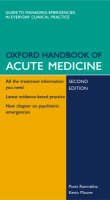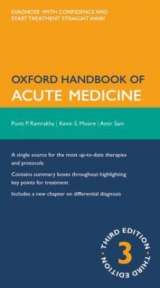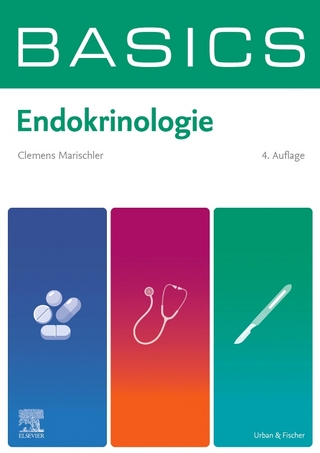
Oxford Handbook of Acute Medicine
Seiten
2004
|
2nd Revised edition
Oxford University Press (Verlag)
978-0-19-852072-6 (ISBN)
Oxford University Press (Verlag)
978-0-19-852072-6 (ISBN)
- Titel erscheint in neuer Auflage
- Artikel merken
Zu diesem Artikel existiert eine Nachauflage
Treating acutely ill patients is one of the most demanding and stressful aspects of being a doctor. The aim of this book is to provide a source for doctors to access this information, to give them the confidence that they are treating their patients with the best, most modern treatments, and to teach them how and why the treatments are working.
The management of acute medical emergencies is the most demanding and stressful aspect of medical training. Most textbooks of medicine can only go into general detail about the management of medical emergencies, and it is difficult for the practising doctor to keep up-to-date with the latest guidelines while doing a busy clinical job. The Oxford Handbook of Acute Medicine is an up-to-date, practical and comprehensive guide to the management of the acutely ill patient. The book relates pathophysiology to clinical features to help the reader make the diagnosis quickly. It identifies priorities for treatment and leads the reader, step-by-step, through the management of the patient while awaiting specialist help. Wherever possible, published guidelines have been incorporated to ensure that the book reflects current, recommended management of medical emergencies, with evidence-based treatments. Details of specialist treatments are included to inform readers about the patient's likely ongoing care. The layout of the book reflects clinical practice: topics are divided into assessment, differential diagnosis, immediate management and ongoing treatment.
There is an extensive section on practical procedures. It is the ideal companion for students (keen to understand the management of patients they see during their training), practising physicians at all levels from recently qualified doctors to consultants (to brush upon the modern management of acute medical conditions), staff in A&E who see acutely ill patients daily, and nurses caring for acutely ill patients.
The management of acute medical emergencies is the most demanding and stressful aspect of medical training. Most textbooks of medicine can only go into general detail about the management of medical emergencies, and it is difficult for the practising doctor to keep up-to-date with the latest guidelines while doing a busy clinical job. The Oxford Handbook of Acute Medicine is an up-to-date, practical and comprehensive guide to the management of the acutely ill patient. The book relates pathophysiology to clinical features to help the reader make the diagnosis quickly. It identifies priorities for treatment and leads the reader, step-by-step, through the management of the patient while awaiting specialist help. Wherever possible, published guidelines have been incorporated to ensure that the book reflects current, recommended management of medical emergencies, with evidence-based treatments. Details of specialist treatments are included to inform readers about the patient's likely ongoing care. The layout of the book reflects clinical practice: topics are divided into assessment, differential diagnosis, immediate management and ongoing treatment.
There is an extensive section on practical procedures. It is the ideal companion for students (keen to understand the management of patients they see during their training), practising physicians at all levels from recently qualified doctors to consultants (to brush upon the modern management of acute medical conditions), staff in A&E who see acutely ill patients daily, and nurses caring for acutely ill patients.
1. Cardiovascular emergencies; 2. Respiratory emergencies; 3. Shock; 4. Infectious diseases; 5. Infections in the HIV patient; 6. Renal emergencies; 7. Neurological emergencies; 8. Psychiatric emergencies; 9. Endocrine emergencies; 10. Gastroenterological emergencies; 11. Haematological emergencies; 12. Rheumatological emergencies; 13. Dermatological emergencies; 14. Drug overdoses; 15. Disorders due to physical agents; 16. Practical procedures; Reference intervals; Useful web sites; Useful telephone numbers; Index
| Erscheint lt. Verlag | 2.9.2004 |
|---|---|
| Reihe/Serie | Oxford Handbooks |
| Zusatzinfo | colour plate section and 20 line illustrations |
| Verlagsort | Oxford |
| Sprache | englisch |
| Maße | 138 x 216 mm |
| Gewicht | 495 g |
| Themenwelt | Medizin / Pharmazie ► Medizinische Fachgebiete ► Anästhesie |
| Medizin / Pharmazie ► Medizinische Fachgebiete ► Dermatologie | |
| Medizinische Fachgebiete ► Innere Medizin ► Endokrinologie | |
| Medizinische Fachgebiete ► Innere Medizin ► Gastroenterologie | |
| Medizinische Fachgebiete ► Innere Medizin ► Hämatologie | |
| Medizinische Fachgebiete ► Innere Medizin ► Rheumatologie | |
| Medizin / Pharmazie ► Medizinische Fachgebiete ► Intensivmedizin | |
| Medizin / Pharmazie ► Medizinische Fachgebiete ► Neurologie | |
| Medizin / Pharmazie ► Medizinische Fachgebiete ► Notfallmedizin | |
| Medizin / Pharmazie ► Pflege ► Fachpflege | |
| Sozialwissenschaften ► Soziologie | |
| ISBN-10 | 0-19-852072-7 / 0198520727 |
| ISBN-13 | 978-0-19-852072-6 / 9780198520726 |
| Zustand | Neuware |
| Informationen gemäß Produktsicherheitsverordnung (GPSR) | |
| Haben Sie eine Frage zum Produkt? |
Mehr entdecken
aus dem Bereich
aus dem Bereich
Buch | Hardcover (2023)
UNI-MED (Verlag)
CHF 55,70



